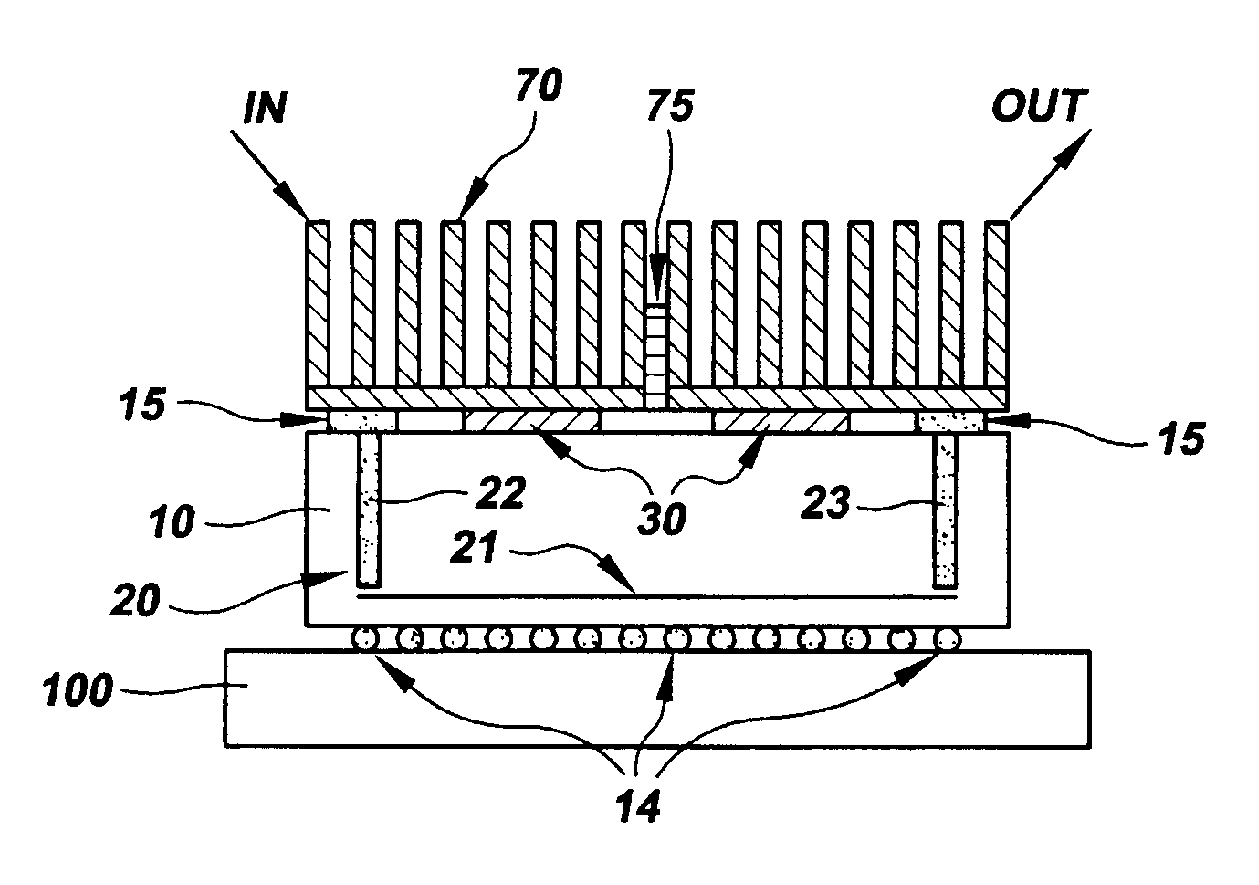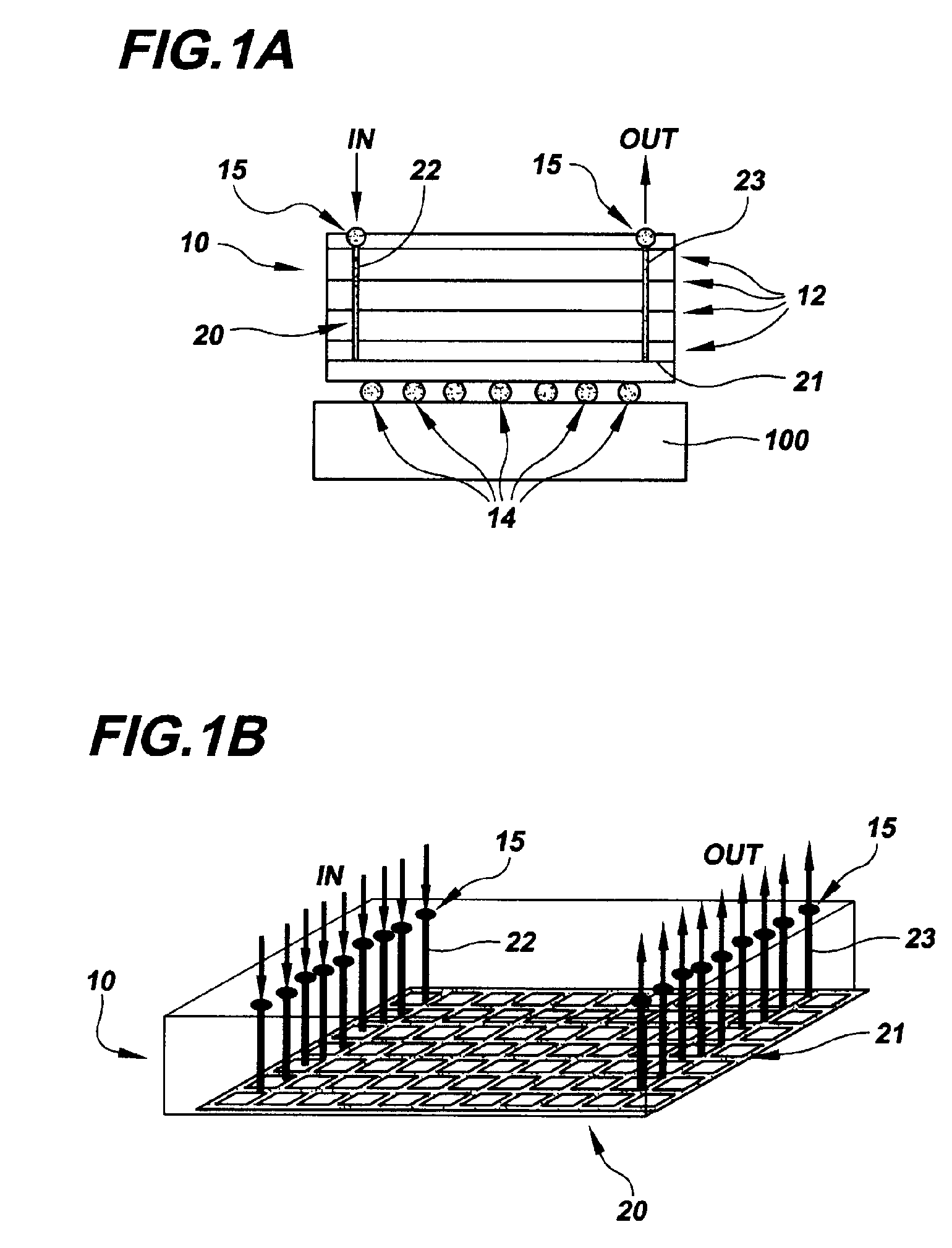Electrical wiring design for module removal and replacement from organic board
a technology of electrical wiring and organic boards, applied in the field of reworkable and removable encapsulated integrated circuit chips, can solve the problems of local hot spots across the board, components may need to be separated from one another, and certain components within the assembly may be undetected from one another,
- Summary
- Abstract
- Description
- Claims
- Application Information
AI Technical Summary
Benefits of technology
Problems solved by technology
Method used
Image
Examples
Embodiment Construction
)
[0033] In describing the preferred embodiment of the present invention, reference will be made herein to FIGS. 1A-3C of the drawings in which like numerals refer to like features of the invention.
[0034] The present invention provides for the removal and rework of electrical modules joined to a board or substrate via solder interconnections. The invention advantageously uses the electrical design of the electrical module itself to create wiring channels within the package. The wiring channels may use an existing electrical component within the module, or they may modify or add to the existing electrical design of the module. Preferably, the wiring channels use existing mesh planes or slightly modified mesh planes residing within the module. The wiring channels transfer the required levels of electric current to the joint interface adjacent the solder interconnections. This current is used to create Joule heating (I2R) at the joint interface to melt the solder interconnections and a...
PUM
| Property | Measurement | Unit |
|---|---|---|
| alternating frequencies | aaaaa | aaaaa |
| temperatures | aaaaa | aaaaa |
| temperatures | aaaaa | aaaaa |
Abstract
Description
Claims
Application Information
 Login to View More
Login to View More - R&D
- Intellectual Property
- Life Sciences
- Materials
- Tech Scout
- Unparalleled Data Quality
- Higher Quality Content
- 60% Fewer Hallucinations
Browse by: Latest US Patents, China's latest patents, Technical Efficacy Thesaurus, Application Domain, Technology Topic, Popular Technical Reports.
© 2025 PatSnap. All rights reserved.Legal|Privacy policy|Modern Slavery Act Transparency Statement|Sitemap|About US| Contact US: help@patsnap.com



